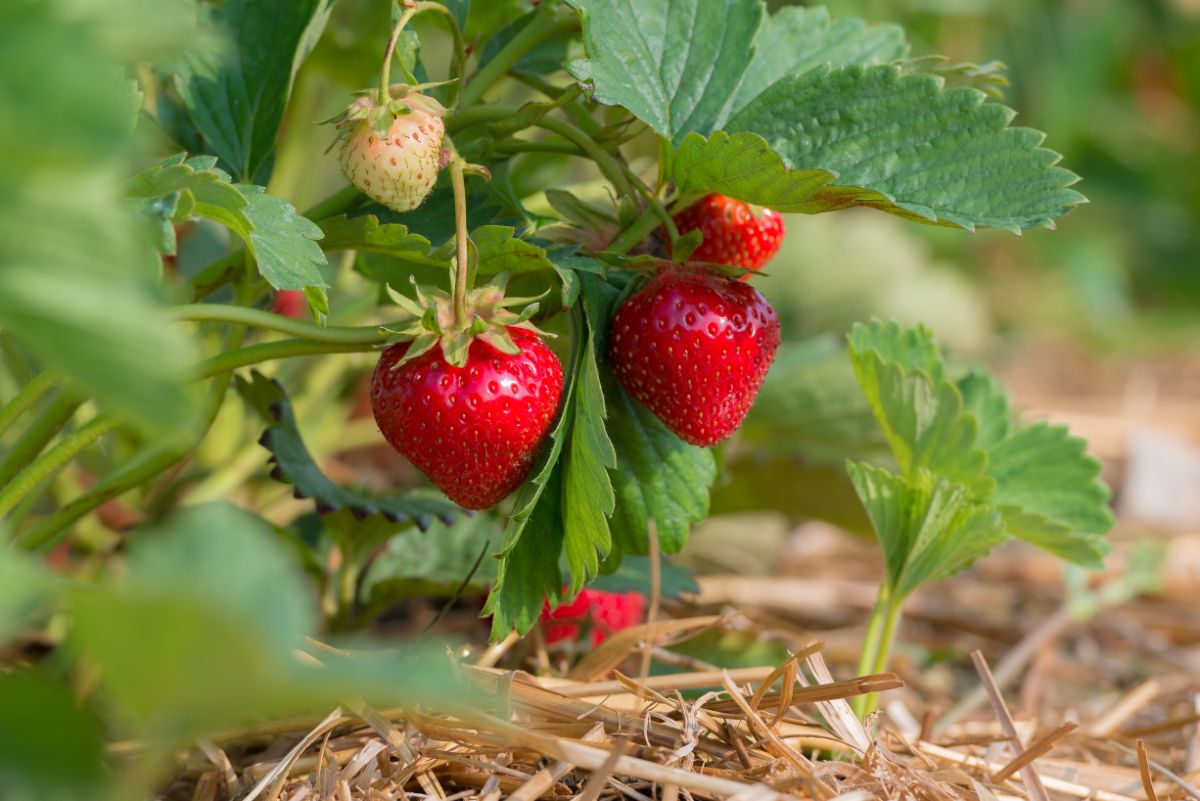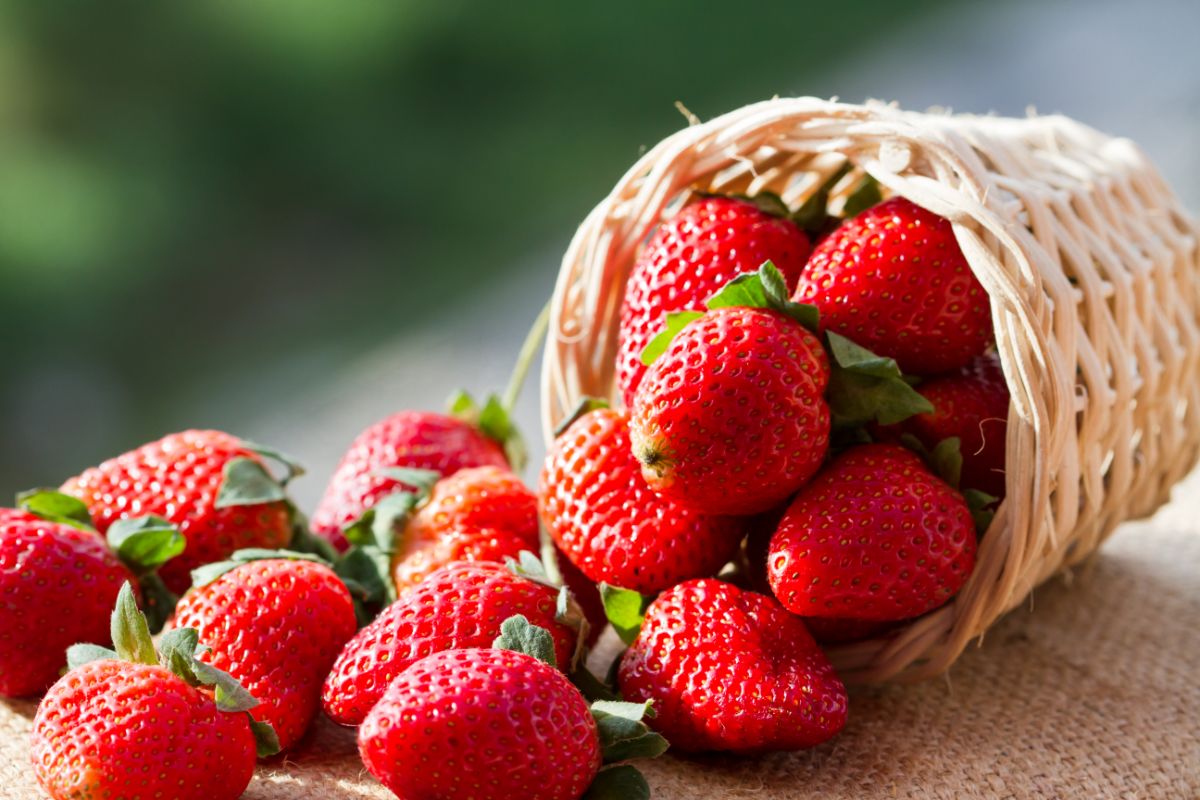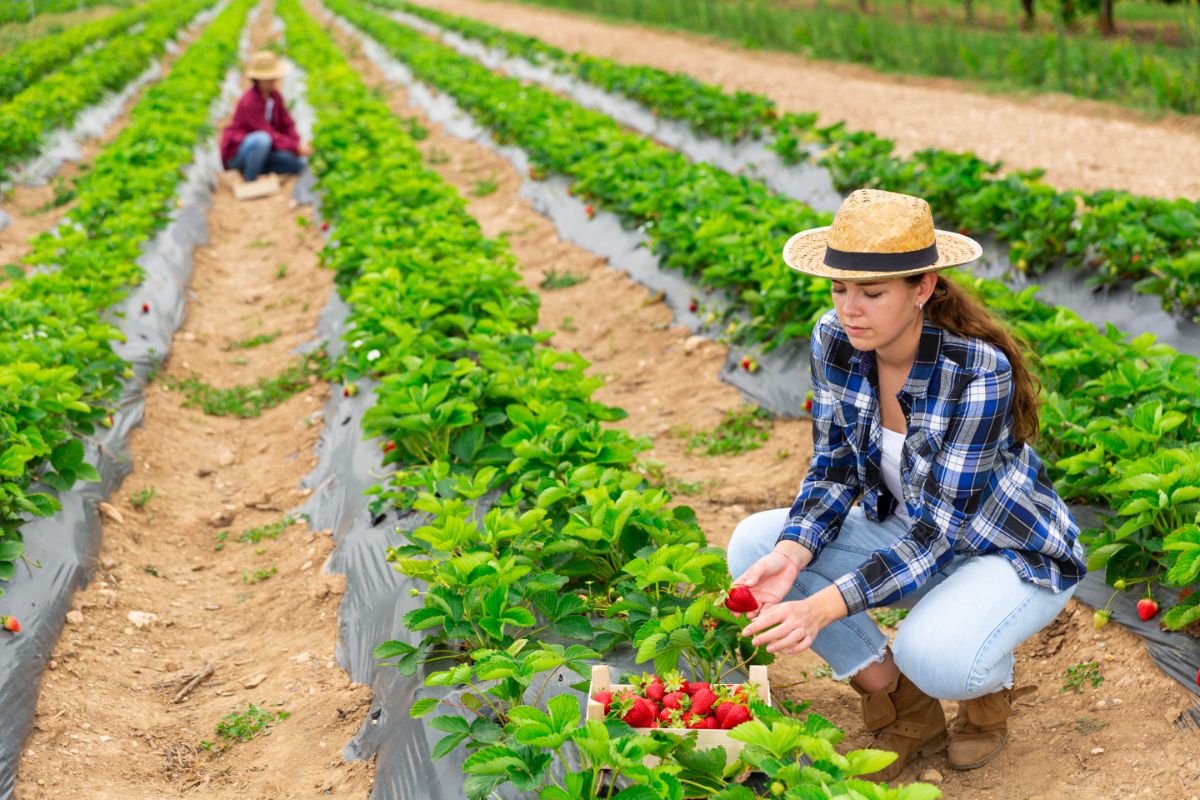Everyone loves the first bite of a sweet, ripe strawberry. If your strawberries haven’t been producing the sweetness level that you were expecting, there could be an explanation. In most cases, it’s the strawberry’s inability to fully develop that leads to a sour taste. If the weather was cold, cloudy, or rainy during the growing season in May and June, or if temperatures soared to extreme levels, then your berries could be sour or bitter in response. Poor soil conditions, low sun levels, and planting at the wrong time can all lead to sour or bitter harvests. Overcrowding and unpruned plants can also produce poor crop yields. So, what can you do to produce high-quality, sweet strawberries? First, choose the right kind of plant.

Jump to:
What Are the Recommended Varieties of Strawberries?
There are three types of strawberry plants:
- June-bearing varieties
- Everbearing varieties
- Day-Neutral varieties
Understanding the needs of each plant will help you choose the right type of strawberry for your climate. For example, June-bearing plants will produce plants around June in most climates, but they have to start their growth process in the previous Autumn. Everbearing varieties produce crops in spring, and they’ll create a second crop in late summer or early fall. Day-Neutral plants create new strawberries throughout the season so long as the temperature is between 35° and 85 °F.
Different varieties have flavors that will vary. For example, the Northeaster is suited to the conditions in Southeast Canada and the Northeast United States. The fruit is known to have a strong aroma and flavor associated with a sweet crop. Alpine strawberries, on the other hand, are extremely small but have an intense flavor, according to The Old Farmer’s Almanac. Choose the right strawberry for your climate, and that’s the first step toward a good crop and the right flavor profile that you’re looking for.
What Helps Strawberry Crops Perform Best?

Strawberry plants perform best when they’re well-drained, placed in fertile ground, and have slightly acidic soil. Strawberries tend to yield greater crops when they’re grown in soil that has a sandy texture and that has been enriched by compost. This is one good reason to use raised beds, which help keep the soil drained and are easier to fill with composted soil throughout the year.
What Makes the Best Soil for Sweet Strawberries?
[amazon bestseller=”soil ph test kit” items=”2″ grid=”2″]
You should plant strawberries in slightly acidic soil. It should have a pH level of 5.5 to 6.8. Additionally, mixing in aged compost or other rich organic matter will help keep the acidity at the level you need while providing essential nutrients to the growing strawberry plants. If you don’t compost, a good option is to use a premium bagged potting mix designed for containers. You can use this in your garden, where plants typically grow best in the ground soil.
On top of this soil preparation, it’s important to continue to fertilize your plants throughout the growing season and even throughout the fall and winter. Use a continuous-release fertilizer to keep your plants fed.
Should You Supplement Your Strawberry Crop’s Sunlight?
Did you know that your strawberry plant needs at least eight hours of sunlight every day? Of course, that might not be possible if it’s raining out or the day is cloudy, but getting as much sun on your plants as possible will help them produce sweeter strawberries. Sun is an essential component to creating sweet strawberry crops, whether that sunlight is real or artificial.
That takes us to the next issue: supplemental light sources.
You could consider supplementing plants dealing with cloudy, cold, or rainy conditions with a sun lamp (also known as a grow light) according to the studies performed in Japan at experimental stations around the country. Using a grow lamp prevents your strawberry plants from entering into dormancy and extends the “day” for them. Adding several hours of light with a grow lamp can help improve your plant’s petiole and height, which is an indication of good growth and health. Shorter petiole and height indicate that your strawberry plant or plants aren’t getting enough sunlight. Using daylight bulbs with grow lamps has not been shown to inhibit flowering, so you can still expect a good yield from any crop grown with this method. The study suggested using an incandescent lamp with far-red light (700-800 nm) for your strawberries’ supplemental sunlight needs. Once the fruit is ripe and red, it’s time to harvest it.
When Should You Harvest Strawberries for the Sweetest Taste?

The fruit of a strawberry plant is ready to be harvested between four and six weeks after blossoming. You should only pick new strawberries from your plants every three days and only harvest fully vine-ripened strawberry plants. They should be completely red.
When you harvest a strawberry, don’t just pick the berry. Cut the stem as well, so that you don’t damage the plant. If you want to keep the sweet flavor once picked, make sure you harvest your strawberries from the vine when it’s a cool morning. Refrigerate them immediately following the harvest. Don’t harvest a strawberry before it appears fully red and ripe, because it will not continue to ripen after it’s picked. They are also highly perishable, so leaving them at room temperature will lead to decay, according to FoodSafety.gov.
These have been a few common questions and answers that can help you produce a sweet strawberry and keep yields high. Try out these methods, and you’ll see a real difference in the growth and sweetness of your crop.










Peter says
My strawberries last year were not very sweet, this season i am using awakened dormant over the winter plants, i am increasing nutrients this time hopefully the sugars will return.I am growing in the Southern hemisphere (New Zealand)
Mary Ward says
We would be interested to hear how that goes!
Ingrid says
Hi Erik,
I have for many yrs hanging planters for my strawberries. Do I need to change out the soil every year here in Oregon? What should I feed the plants to make my berries sweet? Is diluted milk good for feeding? What about sugar water?
clinton zellmer says
Thank you for the info. I learned of possibilities on why my strawberries are sour.
Sally WEBB says
Question: Erik, I believe my beautiful new bed of strawberries has leather rot. Can they be saved? They are in a large garden box. They were new and sweet as can be last year. Do I pull and throw these plants away and if so can I replant in same box? I could move my tomato plants to that box and new berries to tomato box next year.